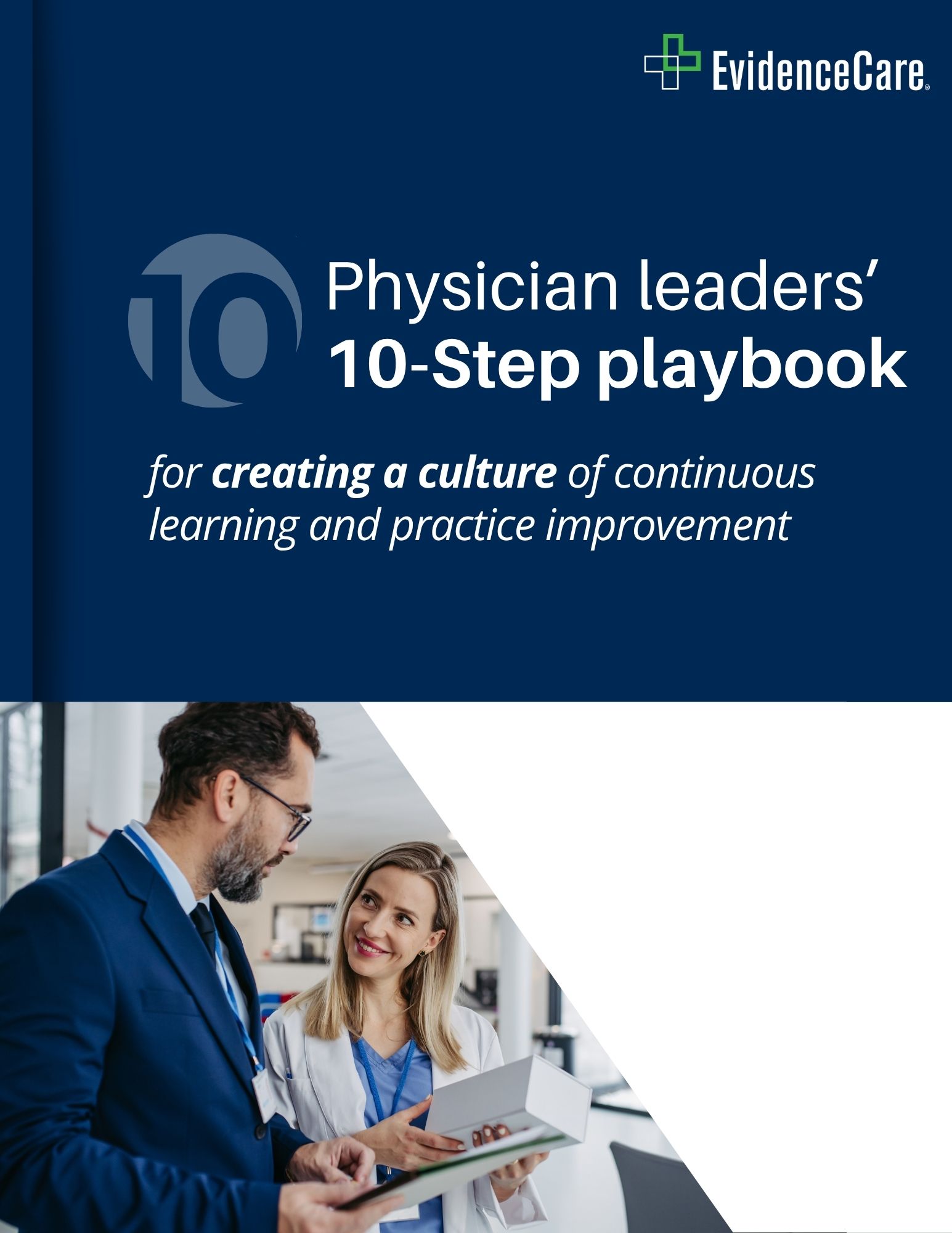How Process Metrics Drive Operational Improvements and Better Clinical Outcomes
Every day, Chief Physician Executives sift through torrents of data—length of stay dashboards, readmission reports, and patient satisfaction surveys—all in the name of better patient care and tighter margins. Yet not all metrics are created equal.
In a landscape where value-based reimbursement, public reporting, and consumer expectations collide, choosing which numbers to track can either accelerate quality improvement or bury teams under unusable information. That’s why the smartest healthcare leaders are homing in on process metrics: the real-time indicators that reveal how care is delivered moment by moment, shift by shift.
Unlike broad outcome measures that often arrive months late and are clouded by factors outside a clinician’s control, process metrics spotlight the behaviors that drive results. They quantify whether evidence-based protocols are followed, whether discharges happen on time, and whether ordered labs align with clinical guidelines. When you can see, in near real time, the precise steps clinicians take, you can correct course quickly, standardize care delivery, and influence health outcomes long before final mortality rates or patient satisfaction scores are tallied.
The payoff is twofold. Operationally, process metrics expose inefficiencies, trim waste, and free up scarce resources in an environment where every minute and dollar matter. Clinically, they provide the fastest path to better health outcomes because they’re the levers physicians can actually pull: ordering the right test, giving antibiotics on schedule, or adjusting a discharge plan. Simply put, mastering process metrics means giving teams a steering wheel instead of a rear-view mirror.
Defining Process Metrics in Healthcare
Process metrics measure the specific actions clinicians and care teams take to deliver quality healthcare. They answer the question, “Did we do what best practice recommends?” rather than “What happened to the patient weeks later?” By contrast, outcome metrics—such as 30-day mortality or HCAHPS scores—reflect the end result of many intertwined factors like comorbidities, social determinants, and post-acute care. Process metrics, therefore, sit closer to the clinician’s daily workflow and fall largely within a provider’s influence.
Below is a sampling of the process indicators health systems frequently monitor to improve patient care and operational reliability:
-
- Percentage of heart-failure patients receiving guideline-directed beta-blocker therapy
- Rate of sepsis bundles initiated within one hour of recognition
- Time from discharge order entry to patient departure
- Frequency of evidence-based VTE prophylaxis orders in medical inpatients
- Proportion of elective surgery cases that start on time
- Percentage of diabetic patients with two documented HbA1c tests each year
- Compliance with medication reconciliation at admission and discharge
- Average turnaround time for radiology reads on emergency CT scans
These measures focus on the steps proven to influence downstream health outcomes, patient satisfaction, and cost. When adherence rates slip, leaders can intervene early, retrain staff, or redesign workflows before negative outcomes surface in CMS or Leapfrog reports. Moreover, process metrics provide an evidence-based language for peer comparison, making it easier to engage physicians in quality improvement without appearing punitive.
Understanding how these indicators relate to the day-to-day operations of a unit is the first step toward systematic change. The next section explores exactly how process metrics uncover inefficiencies, standardize care delivery, and ultimately strengthen the operational backbone of healthcare organizations.
The Role of Process Metrics in Operational Improvements
Process metrics function like a stethoscope for a hospital’s operations, detecting subtle irregularities long before they escalate into overt performance issues. By illuminating how care is delivered in real time, they reveal bottlenecks, redundant steps, and unwarranted variation that compromise both quality improvement initiatives and financial stability.
When leaders can see, for example, that discharge summaries lag three hours behind physician sign-off, they can target that delay directly instead of guessing why length of stay is beyond benchmarks.
Below are key ways process metrics drive consistency and reduce variation across healthcare organizations:
-
- Targeted standardization: Metrics such as guideline adherence for perioperative antibiotics allow teams to codify evidence-based protocols and minimize practice drift across service lines.
- Rapid feedback loops: Near-real-time indicators—time to first troponin or percentage of risk-stratified sepsis screens completed—enable frontline staff to adjust behavior during the same shift, accelerating quality measurement cycles.
- Objective peer comparison: Transparent, risk-adjusted reports on imaging utilization or lab ordering rates foster healthy competition and shared learning without resorting to punitive measures.
- Data-backed workflow redesign: Tracking door-to-balloon times or pharmacy verification turnaround highlights precisely where hand-offs falter, informing Lean or Six Sigma projects with concrete numbers.
- Scalable best practices: Once variation is reduced, standardized pathways become easier to replicate across satellite clinics, improving population health management and system-wide efficiency.
Guiding resource allocation becomes far more strategic with this granular intelligence. For example, if process metrics show routine delays between discharge orders and patient departure, reallocating nurse case managers to earlier rounds can free beds sooner and boost throughput. Similarly, monitoring imaging turnaround times may justify additional radiology staffing during peak hours, reducing downstream emergency department boarding and improving patient satisfaction.
Ultimately, tighter workflows translate into lower costs, higher capacity, and a culture of continuous improvement—a trifecta essential for thriving under value-based payment models from CMS. Yet operational gains are only half the story. The true power of process metrics emerges when these operational refinements cascade into measurable clinical benefits. The next section explores how disciplined attention to the steps of care directly elevates health outcomes and patient experiences.
Linking Process Metrics to Better Clinical Outcomes
When you tighten the processes that govern day-to-day care delivery, the downstream effects are profound. Patients spend fewer unnecessary days in a bed, complication rates fall, and clinicians gain confidence that their efforts align with the best evidence available. Studies from AHRQ and the Institute for Healthcare Improvement consistently show that organizations excelling in process adherence experience superior health outcomes and higher patient satisfaction scores.
In other words, what feels like operational fine-tuning at the unit level manifests as measurable life-saving benefits across entire populations.
Consider how specific process indicators translate into concrete clinical gains:
-
- Timely sepsis bundle initiation (antibiotics, fluids, and lactate draw within one hour) is linked to a 25% relative reduction in mortality compared with delayed treatment.
- Consistent early ambulation orders after hip and knee replacement cut average length of stay by nearly a full day and lower 30-day readmissions for venous thromboembolism.
- Complete medication reconciliation at both admission and discharge reduces all-cause readmission for heart-failure patients by up to 14%.
- Adherence to evidence-based VTE prophylaxis decreases postoperative pulmonary embolism incidence, safeguarding patient safety metrics and avoiding never-events.
- Closing the gap between discharge order time and actual patient departure sparks higher HCAHPS scores around “discharge information” and frees capacity for ED admissions, reinforcing both patient satisfaction and throughput.
These cause-and-effect links emphasize why accurate attribution is indispensable. Clinicians must trust that a pneumonia readmission truly reflects their discharge instructions or that an antibiotic timing lapse stems from their own order entry. When feedback is specific, risk-adjusted, and delivered quickly—ideally within 24 hours—physicians can adjust personal workflows before habits cement. Lagging, aggregate outcome reports rarely create that urgency.
Deploying, analyzing, and sharing these insights at scale, however, takes more than manual audits and spreadsheets. The following section outlines practical tools and strategies—ranging from real-time dashboards to peer comparison frameworks—that help executives operationalize process metrics and sustain momentum.
Tools and Strategies for Implementing Process Metrics
Sophisticated analytics platforms have made it possible to convert raw EHR data into actionable quality metrics. By either pushing these insights to frontline teams while the patient is still in the bed or providing individualized, peer-comparison reporting, healthcare organizations close the gap between data collection and behavior change—an essential ingredient for quality improvement under tight CMS reporting timelines.
To move from insight to sustained improvement, leaders can rely on several proven tactics:
-
- Establish a single source of truth: Integrate data feeds from electronic health records, lab systems, and bed management tools into a unified analytics layer so everyone works from consistent reports.
- Engage physicians with individualized feedback: Deliver private, risk-adjusted scorecards that compare each clinician’s process metrics with local benchmarks.
- Leverage peer comparison in a non-punitive manner: Share blinded rankings during department meetings to spotlight top performers, encourage mentorship, and normalize evidence-based care.
- Embed metrics in daily workflows: Display run charts on unit huddle boards, send automated texts when antibiotic timing slips, and include process adherence in interdisciplinary rounds.
- Pair metrics with coaching: Assign nurse educators or quality champions to review data trends, identify root causes, and co-design quick PDSA cycles.
- Align incentives and recognition: Tie stipends, CME credits, or public praise to sustained improvement in key metrics.
- Conduct ongoing education: Use micro-learning modules or lunch-and-learns to update teams on evolving guidelines and the rationale behind each process measure.
One practical enabler is EvidenceCare’s CareInsights, a clinician-centered tool that quietly fits into existing clinical improvement initiatives. By pulling EHR data, CareInsights texts physicians a short, personalized report on metrics they control—say, CT utilization for uncomplicated headaches—along with local peer benchmarks. Clinicians can learn from each other and recalibrate their ordering patterns rather than wondering how they can individually make impact on hospital length of stay or system-wide quality initiatives.
With the right mix of technology, engagement tactics, and cultural support, process metrics evolve from static scorecards into continuous improvement engines. The concluding section will bring these threads together, underscoring why disciplined attention to the steps of care remains the surest route to operational excellence and superior patient outcomes.
Driving Change with Process Metrics
Process metrics give Chief Physician Executives the clearest line of sight between frontline behaviors and enterprise results. When you track the right indicators—those rooted in evidence and actionable in real time—you create a feedback-rich environment where teams can experiment, learn, and improve every day.
Operational gains such as shorter length of stay, tighter resource utilization, and smoother patient flow are not incidental; they are direct outcomes of disciplined attention to the steps that precede them. More important, patients feel the difference through safer, more consistent care and improved health outcomes.
Sustaining this momentum requires a shared commitment to transparency, collaboration, and continuous learning. Clinicians need timely, trustworthy data; leaders must supply supportive structures and recognize progress; and analytics teams should refine measures so they remain clinically meaningful over time. When these elements align, process metrics become the language of excellence—driving cultural change, operational efficiency, and clinical impact in one integrated motion.
Ready to embed this mindset across your organization? Download EvidenceCare’s comprehensive physician leaders’ 10-step playbook for cultural change and process improvement—packed with checklists, dashboards, and conversation guides—to accelerate cultural change and process improvement.





